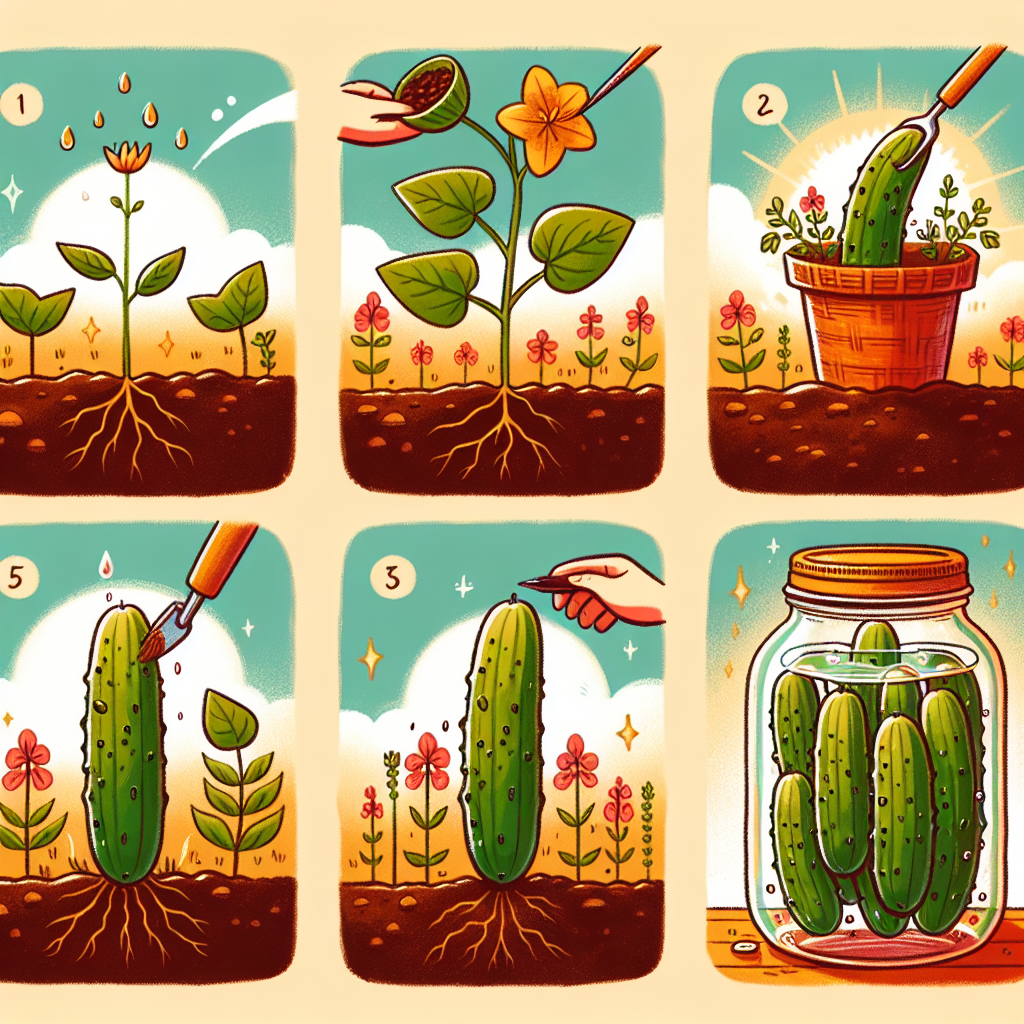
How to grow pickles
How to Cultivate Delicious Pickles at Home
Numerous backyard gardeners and culinary enthusiasts are familiar with the delight that fresh pickles can bring to the table. The journey of producing your own pickles starts long before the canning jars are filled with the crisp, tangy goodness we love. This article offers a comprehensive guide on preparing to grow pickles, from seed selection to harvest, ensuring you're equipped with all the necessary knowledge to achieve success in your pickle-growing adventure.
Understanding What Pickles Are
To grasp how to grow pickles, it's important to first understand what pickles actually are. Although the term 'pickle' is often used interchangeably with cucumbers, pickles can refer to various types of preserved vegetables. However, for the purpose of this article, we will focus on the most common type: pickled cucumbers. Cucumbers belong to the gourd family and are the primary vegetable used in pickling. Here's a look at some popular pickle varieties:
- **Dill Pickles**: Infused with dill seasoning, these are the classic pickles.
- **Bread and Butter Pickles**: A sweeter, spiced variety often enjoyed on sandwiches.
- **Gherkins**: Smaller pickles, perfect for snacking or as condiments.
Choosing the Right Variety
When learning how to grow pickles, selecting the right cucumber variety is crucial. Different varieties have unique characteristics that can affect taste, size, and suitability for pickling. Here are a few cucumber types you might consider:
- **National Pickling Cucumber**: Known for its small size, ideal for jarred pickles.
- **Persian**: These have a thin skin and sweet flavor, great for fresh eating but also good for quick pickles.
- **Kirby**: Extremely popular for pickling due to its firm flesh and good crunch.
Preparing Your Garden
Before diving into planting, it’s essential to prepare your garden. Here’s what you need to consider:
- **Sunlight**: Cucumbers thrive in full sun, requiring at least 6-8 hours of direct sunlight each day.
- **Soil**: A light, sandy loam is ideal. Well-draining soil rich in organic matter will set you up for success.
- **Space**: Cucumbers can spread, so provide ample space or trellises for vertical growth.
Planting Your Pickles
Now that you have everything prepared, it’s time to plant your cucumbers. You can start seeds indoors or plant them directly in your garden. Here’s a quick guide:
- **Plotting Your Garden**: Choose a sunny spot with enough space for your plants.
- **Sowing Seeds**: Plant seeds about 1 inch deep and 12-18 inches apart, or transplant seedlings after the last frost.
- **Water Generously**: After planting, water your seeds or seedlings thoroughly.
The Importance of Watering
Watering is one of the key aspects of how to grow pickles successfully. Cucumbers are very sensitive to moisture levels. Here are the best practices:
- **Consistency**: Cucumbers require regular watering, especially during dry spells.
- **Deep Watering**: Water them deeply, at least once a week, to encourage strong root development.
- **Avoid Foliage**: Focus on watering the soil rather than spraying water over the leaves to prevent disease.
Weed and Pest Management
Keeping your cucumber patch free from weeds and pests is essential for healthy growth. Here are some strategies:
- **Mulching**: Apply a layer of mulch around your plants to suppress weeds and retain moisture.
- **Manual Weeding**: Regularly check for weeds and pull them out by hand.
- **Pest Control**: Keep an eye out for pests like aphids and cucumber beetles. Introduce friendly insects like ladybugs or use organic insecticidal soap if needed.
Fertilization for Optimal Growth
To help your cucumber plants thrive, proper fertilization is key. Here’s how you can feed your plants:
- **Choose the Right Fertilizer**: Opt for a balanced fertilizer or one higher in phosphorus and potassium for blooming and fruiting.
- **Frequency**: Apply fertilizer once every 2-4 weeks, depending on plant growth and soil quality.
- **Organic Options**: Consider compost or well-rotted manure to enrich the soil naturally.
Harvesting Your Cucumbers
Knowing when to pick cucumbers is just as important as how to grow pickles. Harvesting at the right time ensures the best flavor and texture. Here are signs to look for:
- **Size**: Depending on variety, cucumbers are usually ready 50-70 days after planting, when they’re 4-6 inches long.
- **Color**: Look for a vibrant green color, indicating ripeness.
- **Skin Texture**: The skin should be firm and not overly shiny.
Preserving Your Pickles
Once you’ve harvested your cucumbers, the fun begins: it’s time to transform them into pickles! Here’s a quick overview of the basic preservation process:
- **Choose a Pickling Method**: Decide whether you want to create quick pickles or do a canning method for longer preservation.
- **Prepare Brine**: Use a mixture of vinegar, water, salt, and seasonings. Popular spices include dill, garlic, mustard seeds, and peppercorns.
- **Pack Jars**: Place cucumbers in sterilized jars and pour the brine over them, ensuring they are fully submerged.
Conclusion: Enjoying Your Homegrown Pickles
Gardening can be a fulfilling hobby, and producing your own pickles is a rewarding extension of that joy. Following these key steps not only shows you how to grow pickles but also allows you to savor the fruits of your labor throughout the year. Home-canned pickles serve as great snacks, additions to sandwiches, or delightful accompaniments to a variety of dishes.
So gather your seeds, prepare your garden, and embark on your pickle-growing journey. You’ll find that with patience, practice, and a sprinkle of love, you'll have a bountiful harvest of delightful pickles ready to enjoy and share with family and friends!
By Guest, Published on August 20th, 2024